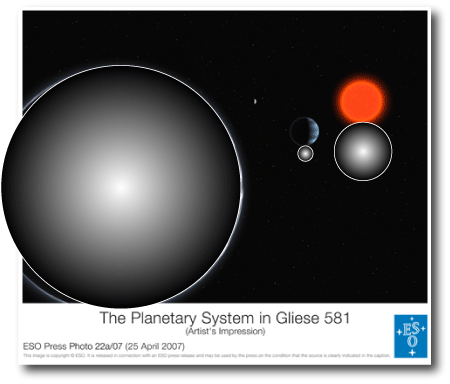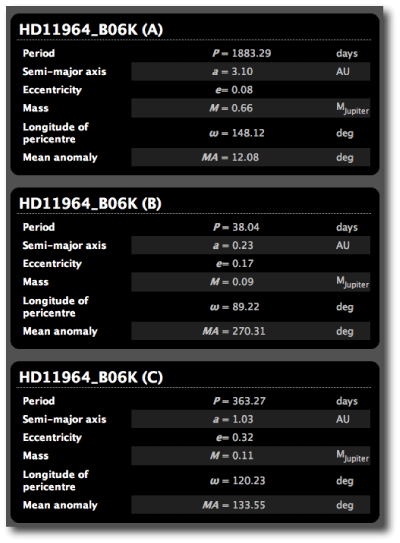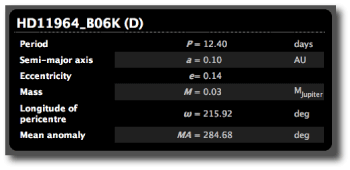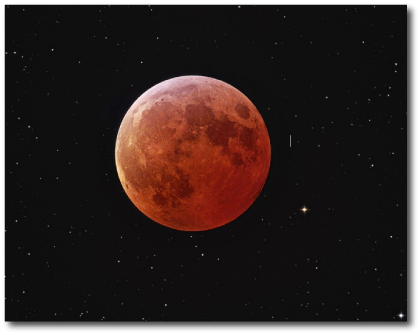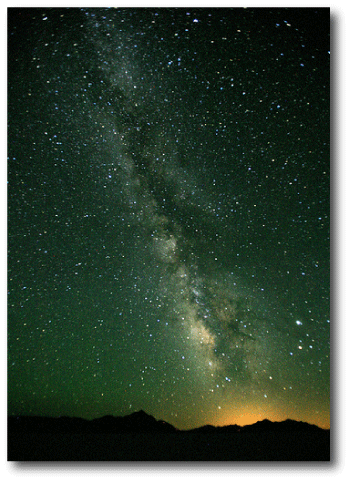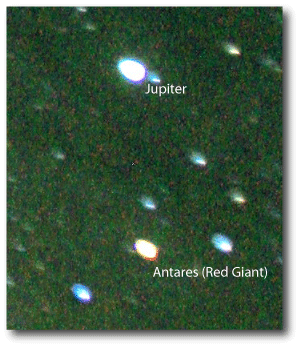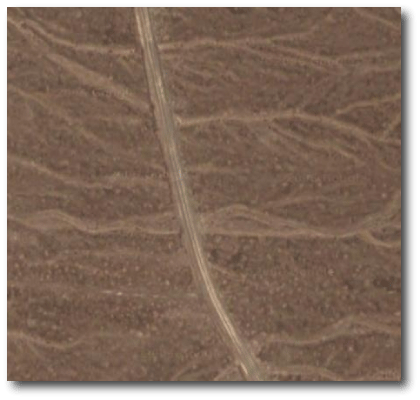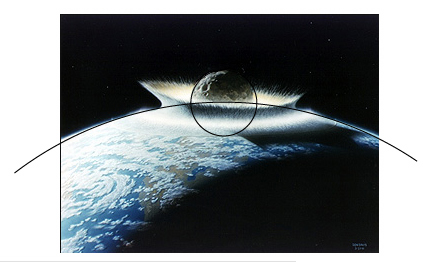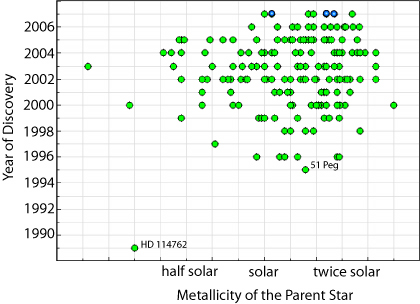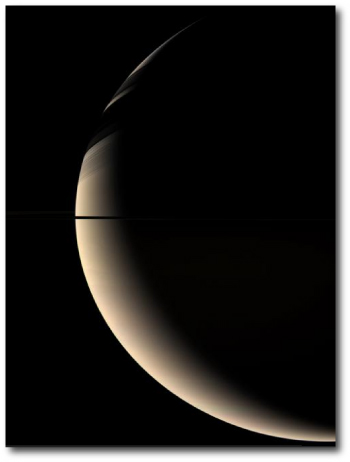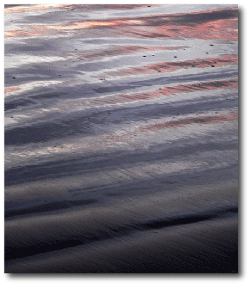I’m still really jazzed that the systemic users detected Gl 581 c prior to its discovery announcement.
A dramatic ESO press release “Artist’s impression” of the Gl 581 system is all over the web today. It shows a planet that appears quite dry, clearly drawing on a model of in-situ formation from silicates and iron. In all likelihood, however, the planet migrated from beyond the snowline in Gl 581’s protostellar disk. It likely contains at least an Earth’s mass worth of water, and the view from space would show the upper layers of a deep and stormy atmosphere. Jonathan Langton is running hydrodynamical simulations to try to get a sense of what the weather is like on this world, and we’re hoping to have an animation up very shortly. (See this brief description of yesterday’s splash image).

Image Source.
One of my pet peeves is that it’s possible to produce far more accurate and photo-realistic press release images of extrasolar planets than is usually done. Artist’s impressions generally veer toward being luxuriously long on depicting what we don’t know and rudely short when it comes to presenting what we do know.
At the JPL Cassini/Huygens website, there is a trove of photos taken by the orbiter showing Saturn and its moons from different vantages and illumination conditions. The photos below were taken from a location near the ring plane, and show Rhea and Enceladus. The two pictures were taken one minute apart as Enceladus (314 miles in diameter) is occulted by the larger Rhea (949 miles across) as seen from the spacecraft.

This sequence of photos makes the most of the kinds of information that we do know about extrasolar planets, namely the system geometry, the relative sizes, the orbital dynamics, and the illumination. Note how the night side of Enceladus is eerily lit by the unseen Saturn. These particular photos, furthermore, are effortlessly discrete with respect to what we don’t know about extrasolar planets, namely the geological details of the surfaces. In the absence of concrete information, the surface is perhaps better left either to the mind’s eye or to the moment when we get the real image. In Cassini’s glorious up-close view, Enceladus was revealed to be far more bizarre and interesting than anyone had imagined:
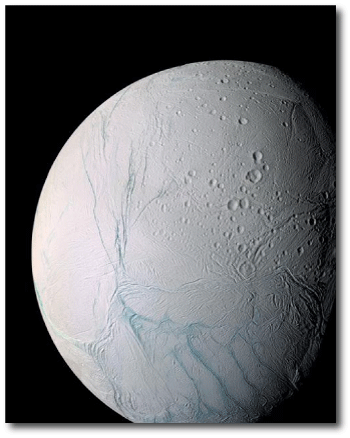
The lighting in the Gl 581 press release image is pretty weird. We’re looking straight at the parent star, and yet planet “c” is seen in quarter phase, illuminated by a source of white light placed to the right of the scene. The star, however, is thought to be single.
The dynamic range of illumination in the scene is way off as well. If we’re looking straight at a star, then the field of view is completely flooded, saturated with light, and replete with lens flares. Planets are always lost in the glare if you’re looking straight at a star. Since any view of a star is seen through an optical system, I think it should be possible to achieve a better sense of optical dynamical range by correctly applying lens flares. Over the next year, we’ll be looking into this in much more depth.

Image Source.
This website has an interesting discussion of how to correctly render the colors of stars. Dynamic range aside, and assuming that the star is a 3000K blackbody radiator (which isn’t quite right, but is a reasonably good approximation) the color should be a lighter shade of orange. As drawn, the color is more appropriate to the night-side glow of a hot Jupiter.

What about the perspective in the scene? At first glance, it looks like Gl 581 “b” might have been drawn a little too large. Using the information in table 1 of the Udry et al. preprint, and adopting a 1.7 Earth-diameter size for “c”, a Neptune-size for “b”, and 0.3 solar diameters for Gl 581 itself, we can draw the orbits and sizes of the planets to scale and almost have it fit correctly in an image that fits on the blog. (You may want to make your browser window wider):

In reality, because of pixelation, the tiny dots showing the planets are a bit larger than they should be. Ellipses are circles seen from an angle, so by applying a 1-dimensional re-scale with Adobe Illustrator, we can view the system to scale from a long distance away:

When I’m looking at the ESO press release image on my computer screen, the planet measures 7.5 cm across, and is located 45 cm from my eye. It subtends an angle of 9.5 degrees at the vantage from which its being viewed. The point of view is thus located 11 planetary radii above the surface of the planet, and drawn to scale, the geometry in the image looks like this:

As viewed from the skies of planet “c”, planet “b” subtends an angle of 36 arc minutes, and remarkably, would appear just slightly larger than the Moon appears from Earth. The parent star, on the other hand would subtend 2.3 degrees of the sky, which is about ~4.6 times larger than the Sun appears in our sky. (Given that Gl 581 “c” is in a habitable orbit, and given that the star is a red dwarf, it’s absolutely necessary to have the star fill more of the sky.) With this information, we can draw the correct angular sizes of the star and the planet “b” as seen from the vantage of the drawing. The planet “b” should be somewhat smaller than drawn, and the star should be somewhat larger. On the balance, however, the angular sizes aren’t that far away from being correct.
